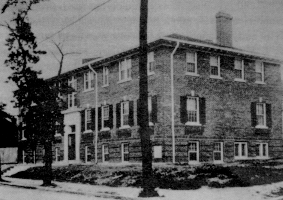BETHLEHEM CENTERS OF NASHVILLE (1894- )
 later
it was named Wesley Community House, and its programming was modeled after
Jane Addams' Hull House in Chicago, Illinois. Its programs for the disadvantaged
ranged from educational to recreational services. In 1913, after numerous
moves, the Wesley Community House moved into new facilities on Wharf Avenue,
where it remained until 1957. Officials of Wesley House developed the J.
C.Napier Center in 1956 to serve the African-American community.
later
it was named Wesley Community House, and its programming was modeled after
Jane Addams' Hull House in Chicago, Illinois. Its programs for the disadvantaged
ranged from educational to recreational services. In 1913, after numerous
moves, the Wesley Community House moved into new facilities on Wharf Avenue,
where it remained until 1957. Officials of Wesley House developed the J.
C.Napier Center in 1956 to serve the African-American community.
Linda T. Wynn